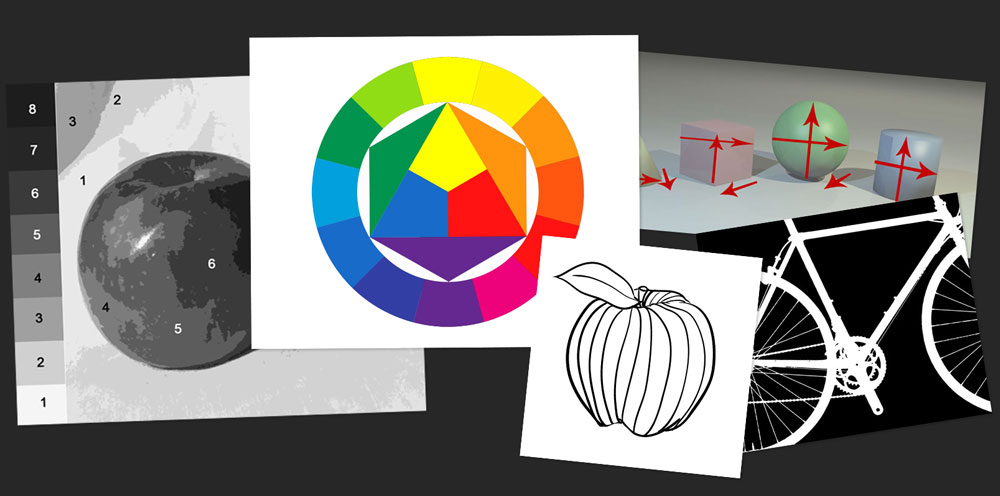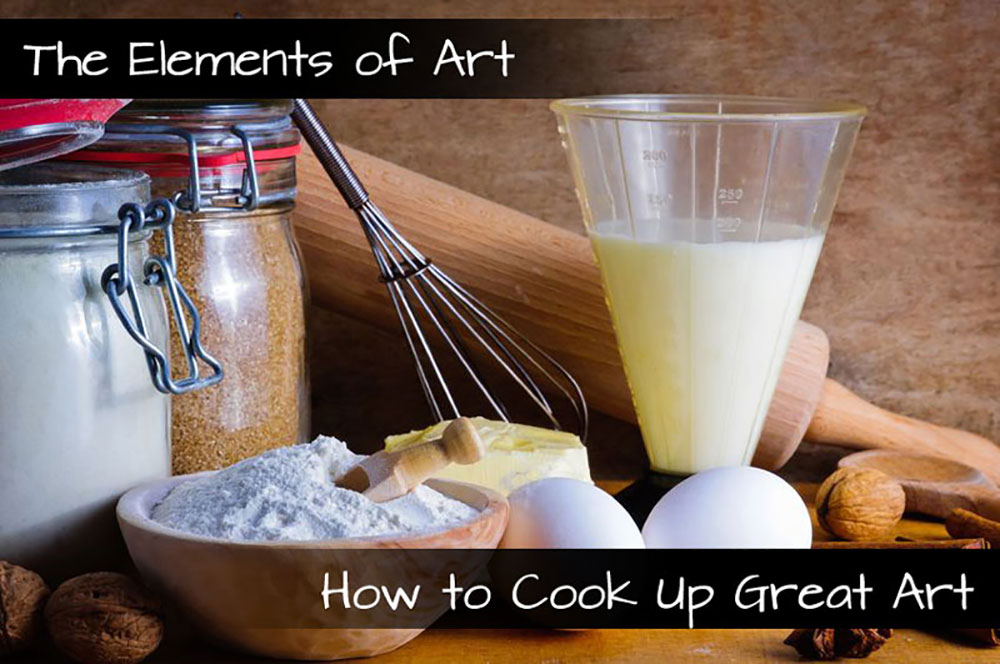
Quality art starts with the elements and principles of art. I like to explain to my students how the elements and principles of art work through the illustration of cooking. (I even speak like I am Julia Childs when I am explaining this concept to them. )

It's easy to get confused when discussing the elements and principles of art and group them all together as one big group of abstract terms. It's much easier to understand when you compare them to cooking.
When you are cooking something, you have a list of ingredients that are organized by the recipe. The elements of art are like the ingredients. If you are a good cook, then you care about quality ingredients. The same is true if you are a good artist. You care about the quality of elements that you chose to put in your artwork.
The lines, shapes, forms, values, colors, textures, and spaces that are incorporated must all work to make your artwork great. The elements must be used as quality ingredients in an artwork.
So you must spend some time exploring them, understanding them, and learning how to use them together effectively. The same is true of cooking - you cannot just throw a list of great ingredients together and expect to create a great dish. You must follow the recipe.
The recipe is the principles of art. The principles of art are an organized way that the elements of art are arranged in a work of art.
The elements can be arranged in a work to produce balance, harmony, unity, rhythm, proportion, variety, emphasis, and movement. So the principles of art are dependent on the elements. No elements - no principles. No ingredients - no recipe.
So you must explore the principles as well. Creating good artwork is not just skill. It is definitely not luck or trial and error. It is knowledge.
The principles of art generally deal with the way the elements of art are composed within the work of art. So, the principles of art typically deal with composition. The principles tend to be more fluid than the elements meaning that opinions vary on what the principles really are. I suggest that there are eight concrete principles of art, and few others that would be considered art fundamentals.
The eight principles of art are balance, proportion, unity, harmony, variety, emphasis, rhythm, and movement. All of these principles clearly deal with the placement of elements within artwork.
Of course, there are other art fundamentals other than the elements and principles that every artist should understand and implement. These include, but are not limited to composition, contrast, dominance, content implementation, aesthetics, art criticism, and symbolism.
Composition - The way visual elements are positioned in a work of art. Composition is highly dependent on the use of the principles of art.
Contrast - refers to difference between elements or subjects within a work of art. Contrast can be created through variety within the elements of art. (i.e. value, color, texture) Contrast can used to create a focal point or area of interest in an artwork.
Dominance - refers to one area of a work of art that is visually heavier demanding more attention. Dominance is closely related to emphasis.
Content - refers to the message or meaning within an artwork.
Aesthetics - refers to the artwork's visual attraction or beauty.
Art Criticism - An organized approach to evaluating artwork.
Symbolism - Using visual objects or arrangements to represent an alternate meaning.